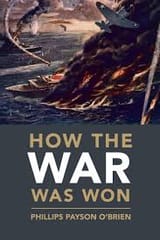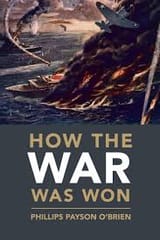>>17974351
This.
Problem is more that Lend-Lease is mistakenly measured in quantity when it was quality that made the difference.
Scopes, radios and range finders are very small parts of a tank, but it essentially makes every difference in its potential, far more than it's armor or turret in most cases. This makes Lend-Lease significant
The food provided was in small quantity but protein rich conserved meat that was far more nutritious and portable then domestic products.
Nearly 100% of Soviet source of aluminum came through Lend lease, which means it 100% affected Soviet domestic airplane production
But allied contribution wasn't mainly through Lend-Lease, it was the fact that the allies managed to tie down the majority of German munition.
Again, another mistake people make is that they only look at boots on the ground to determine where the war was decided. They don't look at where German munitions were dedicated, and it's disproportionately used to fight the western allies. Nearly 50% of German entire munition production was single engine aircrafts, of which the overwhelming majority of the luftwaffe was used to defend German airspace.
Likewise, over 15% of German munitions were anti-air guns, again dedicated to fend German airspace. This is in stark contrast to AFV(panzers) production which only constituted 5-10% of German munition. Even the German navy had a larger offset of munition production, and the navy was exclusively used against the allies.
Bombing campaign also disrputed roughly 30% of German production, so in a sense, the allies destroyed more German material on the assembly line than the soviets did on the field
Finally, some allied battles are heavily neglected even though they were almost equal in scope to Soviet battles. The battle for Tunis occurred roughly the same time as Stalingrad and was pretty much equal in term of Wehrmacht losses (300.000 surrendered, 500 tanks and 3000(!) aircrafts).
Not to mention, allies were fighting a 2-front war
4chan Search
2 results for "f992d972e3b4815e349b9587d7aaae33"
Najority of wehrmacht manpower was in the east, but the majority of wehrmacht guns and material were in the west.
Learn ww2 moron.
Learn ww2 moron.

